Ok, so there might be a few methodological errors with today’s research approach (for starters, everything I know about my case study I learned through Instagram…). But hey: I just spent five minutes investigating whether or not ‘methodological’ is even a real word (#journalism), so it’s not like I’ve completely abandoned all sense of academic integrity.
 I mean, yeah, over 60% of my prep time for this article might have been spent googling phrases like, “Gangsta Beyoncé” – but then again, maybe it was closer to 40? (And isn’t that the average amount of time people usually spend reading about Beyoncé when they’re supposed to be doing other stuff?)
I mean, yeah, over 60% of my prep time for this article might have been spent googling phrases like, “Gangsta Beyoncé” – but then again, maybe it was closer to 40? (And isn’t that the average amount of time people usually spend reading about Beyoncé when they’re supposed to be doing other stuff?)  So let’s not get all hung up on the details, shall we? ;)
So let’s not get all hung up on the details, shall we? ;)
What is positive psychology?
Positive psychology is the study of what’s right with people. (Hence the reason this post is about Beyoncé.)  While traditional psychopathology focuses on identifying and treating disorders (think: the DSM or Diagnostic and Statistical Manual of Mental Disorders), positive psychology encourages researchers to highlight what people are doing well – and what they can do even better. The field also embraces a holistic (‘whole person’) approach to patient treatment – taking into consideration the physical, spiritual, social and psychological dimensions of well-being, all within an environmental context.
While traditional psychopathology focuses on identifying and treating disorders (think: the DSM or Diagnostic and Statistical Manual of Mental Disorders), positive psychology encourages researchers to highlight what people are doing well – and what they can do even better. The field also embraces a holistic (‘whole person’) approach to patient treatment – taking into consideration the physical, spiritual, social and psychological dimensions of well-being, all within an environmental context.
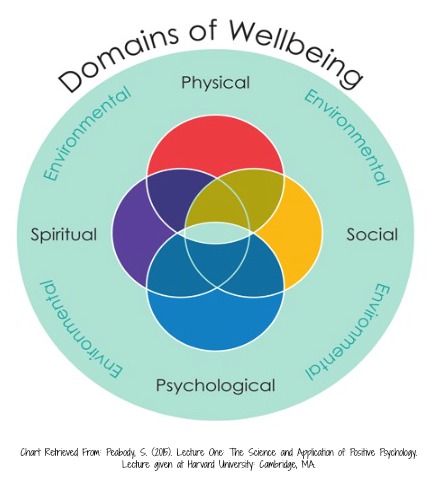 The field gained momentum in 1998, when Martin Seligman (former president of the American Psychological Association, current director of the University of Pennsylvania’s Positive Psychology Center and all-around godfather to the entire field) published his thoughts on psychology’s forgotten mission:
The field gained momentum in 1998, when Martin Seligman (former president of the American Psychological Association, current director of the University of Pennsylvania’s Positive Psychology Center and all-around godfather to the entire field) published his thoughts on psychology’s forgotten mission:
I want to remind our field that it has been sidetracked. Psychology is not just the study of weakness and damage, it is also the study of strength and virtue. Treatment is not just fixing what is broken, it is nurturing what is best within ourselves.”
 However, as Shelly Gable and Jonathan Haidt note in the Review of General Psychology: “Positive psychology does not imply that the rest of psychology is negative.” Rather, explains Harvard lecturer, Stephanie Peabody: It highlights an imbalance within the field. “Our goal,” Dr. Peabody continues, “should be restoring balance and promoting flourishing.”
However, as Shelly Gable and Jonathan Haidt note in the Review of General Psychology: “Positive psychology does not imply that the rest of psychology is negative.” Rather, explains Harvard lecturer, Stephanie Peabody: It highlights an imbalance within the field. “Our goal,” Dr. Peabody continues, “should be restoring balance and promoting flourishing.”
(More on flourishing in a second…)
A lil historical perspective
Warning: This next part kinda reads like a book report, so feel free to skip ahead till you hit another picture of Queen B. But for anyone wanting to trace back the breadcrumbs, I bring you:
 While Socrates, Aristotle and Plato contemplated the good life (I’m telling ya, those guys talked about everything), Abraham Maslow really got the ball rolling in 1954. Using the phrase, “positive psychology” for the first time, Maslow remarked:
While Socrates, Aristotle and Plato contemplated the good life (I’m telling ya, those guys talked about everything), Abraham Maslow really got the ball rolling in 1954. Using the phrase, “positive psychology” for the first time, Maslow remarked:
…psychology has been far more successful on the negative than on the positive side. […] It is as if psychology has voluntarily restricted itself to only half its rightful jurisdiction, the darker, meaner half.”
A couple years later, Marie Jahoda entered the picture with her book, Current Concepts of Positive Mental Health, writing that: “The absence of mental illness is not a sufficient indicator of mental health.” Then Karl Menninger came along (#legend) and published The Vital Balance in 1963.
Cue George Engel in 1977 arguing for a new bio-psycho-social approach to healthcare. And next thing you know, you’ve got Seligman leading the charge and me making memes about Beyoncé!
 (Sorry to go off theme. Matthew McConaughey literally just appeared on my screen.)
(Sorry to go off theme. Matthew McConaughey literally just appeared on my screen.)
Well-being vs. happiness
Now, before we start our Instagram tribute case study of Beyoncé (don’t worry, we’re almost there!), it’s important to point out that positive psychology is not the science of happiness. Sure, it got its start with a happiness focus (Seligman’s first book, Authentic Happiness, measured happiness by life satisfaction and held that the goal of positive psychology was to increase life satisfaction). But times have changed, and referring to positive psychology as ‘smiley-face science’ is about as cliché and dated as calling Ms. Carter ‘bootylicious’.
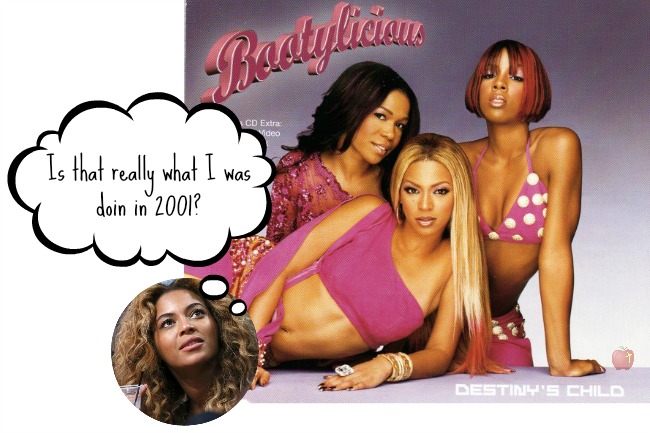 As Seligman explains, the old view placed too high a value on mood and how you feel in the moment (for one thing: the mood you’re in at any given time determines more than 70% of how much life satisfaction you’ll report!), plus the original concept pulled a few too many elements under its happiness umbrella (dragging ‘engagement’ and ‘meaning’ into the mix, instead of giving them their own time to shine). And on top of that, there was other stuff that was being left out. So Seligman revised his theory and shifted the focus to a more comprehensive look at well-being.
As Seligman explains, the old view placed too high a value on mood and how you feel in the moment (for one thing: the mood you’re in at any given time determines more than 70% of how much life satisfaction you’ll report!), plus the original concept pulled a few too many elements under its happiness umbrella (dragging ‘engagement’ and ‘meaning’ into the mix, instead of giving them their own time to shine). And on top of that, there was other stuff that was being left out. So Seligman revised his theory and shifted the focus to a more comprehensive look at well-being.
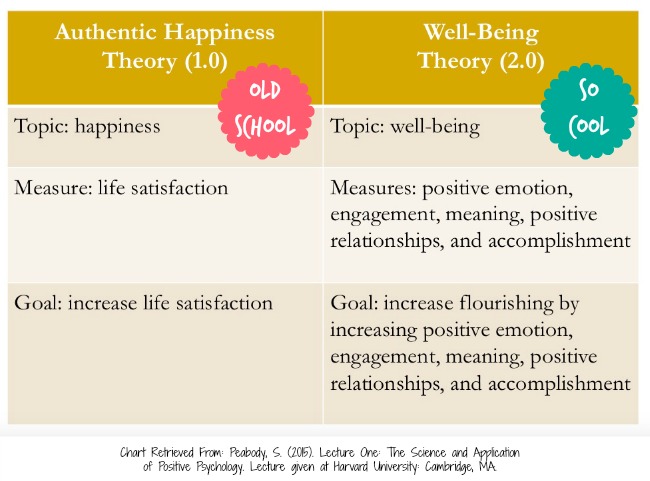 So the take home message? Positive psychology is not just about happiness. As Seligman clarifies,
So the take home message? Positive psychology is not just about happiness. As Seligman clarifies,
Well-being is a construct, and happiness is a thing.”
It has several measurable elements (happiness among them), but none define well-being on their own.
But back to this flourishing business…
So if the goal of positive psychology is to increase flourishing, what the heck does it mean to flourish? Well it turns out, in addition to being a funny little word, ‘flourish’ is actually based on a funny little acronym: PERMA.
Well it turns out, in addition to being a funny little word, ‘flourish’ is actually based on a funny little acronym: PERMA.
According to Seligman, flourishing can be measured through five constructs: positive emotions, engagement, positive relationships, meaning and accomplishment/achievement. But unfortunately, by this standard, less than one fifth of U.S. adults meets the bar!
And not flourishing is not good
According to research that compared flourishing and languishing (the opposite of flourishing) at different points along life’s merry journey, adults who were completely mentally healthy (flourishing to the fullest!) had the lowest number of chronic physical conditions at all ages. #MindBodyConnection, right?!
And get this: The youngest adults who were languishing had the same number of chronic physical conditions as older adults who were flourishing!
So what can we do to improve our own ability to flourish?
Well, for starters, we can adopt a positive psychology perspective and take a look at someone who seems to be doing this whole flourishing thing pretty well…
That’s right, kids! It’s time to study: THE SCIENCE OF BEYONCÉ!
Positive Emotions
I think it’s safe to say that Beyoncé experiences her fair share of positive emotions – ya know, just based off of what I could glean from being alive my research. But if you’re wondering how all that cheerfulness translates into more good things, take a look at Bey’s smile below.
Pretty genuine, right?
Now consider this: A study published in 2001 looked at 141 women in the 1960s and coded their senior college class photos as having either Duchene (genuine) or Pan-Am (forced) smiles. Then the researchers followed up with the participants at ages 27, 43 and 52 – measuring things like happiness, life satisfaction, marriage and health. The results? Women with Duchene smiles (like Beyoncé’s) had a higher likelihood of stable and happy marriages, higher rankings of life satisfaction and better physical and mental health.
Kinda makes you wanna dig out your old yearbook, huh?
(Oh, and before I forget! If you’re into this area of PERMA, definitely check out Fredrickson & Joiner’s Psychological Science article, Positive Emotions Trigger Upward Spirals Toward Emotional Well-being!)
Engagement
Anyone remember that post I wrote four years ago on positive psychology and flow states?
*Sigh* Anyways, in it we discussed Mihaly Csikszentmihalyi’s concept of flow – which is basically a state where you’re so in the zone you lose track of time. Csikszentmihalyi characterizes such activities as the things that make life worth living – calling flow states the “secret to happiness”.
Beyoncé, on the other hand, just calls them concerts.
*Seriously, do yourself a favor and watch Bey take on Tina Turner’s Proud Mary. One of my all time favorite performances ever – guaranteed to boost your positive emotions! ♥
Positive Relationships
We already know from last year’s Valentine’s Day post that love and health are closely related. (Remember that study showing that after the loss of a significant other, patients’ heart attack risk increased up to 21 times higher within the first 24 hours?) Well, according to Seligman, all types of positive relationships – whether romantic or not – are important to overall well-being.
Again, kinda think Beyoncé’s got this concept on lock.
(Just a quick note on relationships in general):
Research has consistently shown social support to be a super important protective factor for psychological resilience. Take, for instance, the Kauai longitudinal findings. Researchers monitored the development of 698 children born on the Hawaiian island at ages 1, 2, 10, 18, 32 and 40. Their results showed that children who were most resilient tended to have “a close bond with at least one competent, emotionally stable person” (often a grandparent, older sibling, etc.). They also relied on peers for emotional support. As far as adults, marriage to a stable partner often predicted recovery from a troubled youth.
Combined research in the field has also identified a number of additional relationship-based factors that contribute to psychological resilience, including: maternal warmth, a good father/child relationship, good peer relations and extended social networks. (Hit me up if you’re interested in the specific studies!)
Bringing it all full circle, Beyoncé’s never been shy about how much she admires her mother (Ms. Tina even gets a shoutout in that Proud Mary performance!); Bey also directly credits her father with shaping the early part of her life.
Meaning
Belief in something bigger than yourself has been shown to be a protective factor in psychological resilience studies and, likewise, believing your life has purpose has been shown to play a critical role in flourishing.
Wanna see where Beyoncé gets her sense of meaning? Take one minute (literally) and watch the video below – I promise, it’s worth it!
So happy YouTube user, Jonathan Mendoza, posted that clip! #goosebumps
Long-time blog readers: This makes me think of that 2012 review of over 400 research studies – the one spanning 50 years – that found that spiritual involvement lessened the incidence of depression and/or reduced depression severity in over 60% of the studies. Factor in the physical benefits of prayer/meditation, and Beyoncé might just turn into Benjamin Button! lol :)
New readers: If that joke doesn’t make sense, check out this earlier post to learn how the relaxation response slows down aging! ;)
Achievement/Accomplishment
Accomplishment and the “achieving life” make up the final dimension of PERMA. The important part about this concept is that it’s pursued for its own sake – meaning that its value doesn’t come as a consequence of activity, but rather from the actual act of achievement itself. In other words: Winning because it feels good to win.
Now, as Seligman explains, inclusion of this element “in no way endorses the achieving life or suggests that you should divert your own path to well-being to win more often.” However, it’s included as a measurement construct because – well, let’s face it – sometimes it does feel good to win, just for the sake of winning. And, for positive psychologists, the goal is to identify and measure all areas that could potentially contribute to well-being.
 Bonus fact: Researchers from the Kauai study found that children who succeeded against the odds “had a special talent that gave them a sense of pride”.
Bonus fact: Researchers from the Kauai study found that children who succeeded against the odds “had a special talent that gave them a sense of pride”.
#themoreyouknow
So what do I have to do to turn into Beyonce?
(Ok, last time I throw back to an old post, I promise): But anyone remember that 2008 review where the most satisfied (happiest) participants lived 7.5 to 10 years longer than their less satisfied peers? Well, here’s another study to back it up:
When autobiographies of 180 nuns, composed during the participants’ early twenties, were scored for emotional content, researchers found that the more positive nuns (those who used more sentences related to gratitude, happiness, hope, love, etc.) lived longer. In fact, the results indicated that the relative risk of death (during ages 75-95) increased in a stepwise fashion as the ranking of positive emotion sentences decreased – showing a 2.5-fold difference in mortality between the lowest and highest rankings!
Which brings us to suggestion number one…
1. Increase positive emotions
2. Build on your strengths
Identifying your personal strengths can go a long way in scheduling/experiencing flow states (and maybe even snagging a trophy or two!). So if your day job doesn’t make you feel like Beyoncé singing a Tina Turner classic, consider taking the VIA Character Strengths survey!
Developed by Seligman and Chris Peterson, the VIA questionnaire provides a ranking of your top 24 strengths based on six different virtues: transcendence, temperance, justice, humanity, courage and wisdom. It’s basically the antithesis of the DSM – cataloging strengths instead weaknesses – and it’s a great place to start if you’re feeling short on direction. (Plus, it’s just kinda fun!)
3. Get in touch with your spiritual side
Once you know your strengths, you need to decide how to use them. Understanding how you fit into the big picture of life makes finalizing that decision a whole lot easier.
(Plus, there’s a ton of research showing that seeking your answers through prayer and meditation improves physical well-being!)
And while there’s definitely a lot of ways to find meaning, I’m with Mrs. Carter – #TeamGod all the way, baby! :)
4. Work out and eat healthy
Overlooked for the most part in this post – but still just as important as ever! – is the role of exercise and healthy nutrition. (Remember: Well-being includes physical functioning too!)
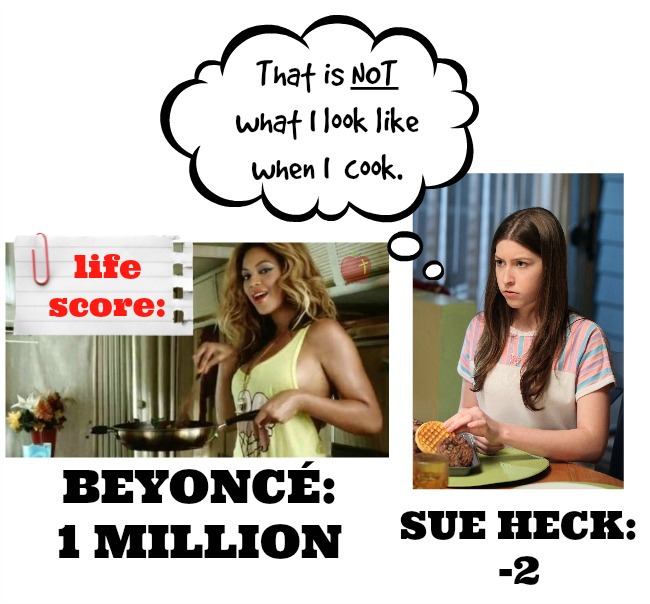 We already know that exercise increases energy, improves mood and fights depression – so why not add it to the list? I mean, hey: All that dancing seems to work out pretty well for Beyoncé…
We already know that exercise increases energy, improves mood and fights depression – so why not add it to the list? I mean, hey: All that dancing seems to work out pretty well for Beyoncé…
#justsayin
Not sure where to start with making healthier choices? Try eating cleaner and getting at least 150 minutes of moderate physical activity each week (brisk walking counts!). Need some more ideas? Check out these posts for tips!
- Clean Eating for Beginners
- How to Plan a Meal Prep Day
- Exercise and Mood: The Basics
- Why You Should Get Active Even When You’re Depressed (published by MindBodyGreen)
And last, but not least…
5. Consider hiring me as your health and wellness coach!
There’s honestly pages and pages of additional information I want to share with you guys (and trust me, I’ll do my best in upcoming posts!) but sometimes it helps to connect more one-on-one. So if you’re interested in learning how to apply the principles of all this mind-body-spirit stuff to your own life, shoot me an email and let’s start talking about your goals! I haven’t formally launched my services yet (expect a new ‘Hire Me’ page on the site coming soon), but I’d love to get a conversation going with anyone who’s interested!
*Please note: I’m not a doctor (I don’t know if I’m legally required to put that in bold with like a million underlines?) but I am a NASM-certified personal trainer ♥ For more on my background, click here!
My spin on positive psychology…
On that note, I leave you with what I consider to be one of the greatest pieces of advice ever on improving well-being – and a principle I think pretty much sums up the science of Beyoncé:
Thank you so much for reading!
If you learned anything from today’s post, I’d be super grateful if you’d consider sharing with your friends or followers ♥ (Share buttons are way down at the bottom!)
And while we’re talking social media, feel free to join Prayers and Apples on Twitter, Instagram and Pinterest! ♥
You can also subscribe to receive notifications about future posts here! :)
Thanks again!!
References
Bonelli, R., Dew, R.E., Koenig, H.G., Rosmarin, D.H. & Vasegh, S. (2012). Religious and spiritual factors in depression: review and integration of the research. Depression Research and Treatment, 2012.
Carson, S. (2015). Lecture One: Psychological Resilience. Lecture given at Harvard University: Cambridge, MA.
Danner, D.D., Snowdon, D.A. & Friesen, W.V. (2001). Positive emotions in early life and longevity: Findings from the nun study. Journal of Personality and Social Psychology, 80(5): 804-13.
Engel, G.L. (1977). The need for a new medical model: a challenge for biomedicine. Science, 196(4286): 129-36.
Fredrickson, B. L. & Joiner, T. (2002). Positive emotions trigger upward spirals toward emotional well-being. Psychological Science, 13: 172-175
Gable, S.L. & Haidt, J. (2005). What (and why) is positive psychology? Review of General Psychology, 9(2): 103-110.
Harker, L. & Keltner, D. (2001). Expressions of positive emotion in women’s college yearbook pictures and their relationship to personality and life outcomes across adulthood. Journal of Personality and Social Psychology, 80(1): 112-24.
Johada, M. (1958). Current concepts of positive mental heath. NY: Basic Books.
Keyes, C.L.M. (2007). Promoting and protecting mental health as flourishing: A complementary strategy for improving national mental health. American Psychologist, 62: 195-108.
Lopez, S.J. & Snyder, C.R. (Eds.). (2009). The Oxford handbook of positive psychology (2nd Ed.). New York, NY: Oxford University Press.
Lyubomirsky, S., Sheldon, K.M. & Schkade, D. (2005). Pursuing happiness: The architecture of sustainable change. Review of General Psychology, 9(2): 111-131.
Menninger, K., Pruyser, P. & Mayman, M. (1963). The vital balance: The life process in mental health and illness. NY: Viking Press.
Mostofsky, E., Maclure, M., Sherwood, J.B., Tofler, G.H., Muller, J.E. & Mittleman, M.A. (2012). Risk of acute myocardial infarction after death of a significant person in one’s life: The determinants of MI onset study. Circulation, 125: 491-496.
Peabody, S. (2015). Lecture One: Science and Application of Positive Psychology. Lecture given at Harvard University: Cambridge, MA.
Peabody, S. (2015). Lecture Two: Classifications and Measures of Happiness, Strengths and Well-being, Part One. Lecture given at Harvard University: Cambridge, MA.
Richman, L.S., Kubzansky, L.K., Maselko, J., Kawachi, I., Choo, P. & Bauer, M. (2005). Positive emotion and health: Going beyond the negative. Health Psychology, 24(4): 422-429.
Seligman, M. (1998). Building human strengths: Psychology’s forgotten mission. APA Monitor.
Seligman, M. (2012). Flourish: A visionary new understanding of happiness and well-being. New York, NY: Free Press.
U.S. Department of Health and Human Services. (2008). 2008 Physical Activity Guidelines for Americans.
Veenhoven, R. (2008). Healthy happiness: Effects of happiness on physical health and the consequences for preventative health care. Journal of Happiness Studies, 9(3): 449-469.
Werner, E. (1993). Risk, resilience and recovery: Perspectives from the Kauai longitudinal study. Development and Psychopathology, 5(4): 503-515.

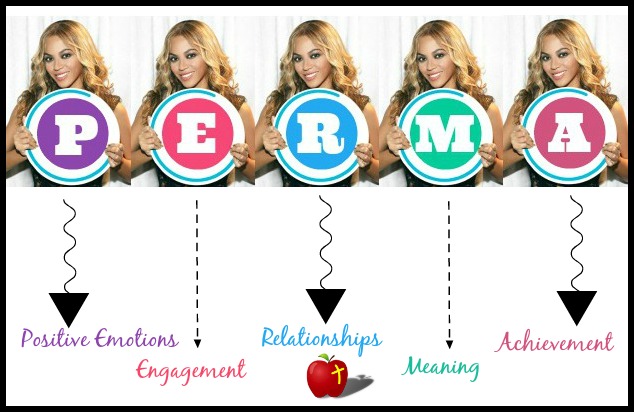
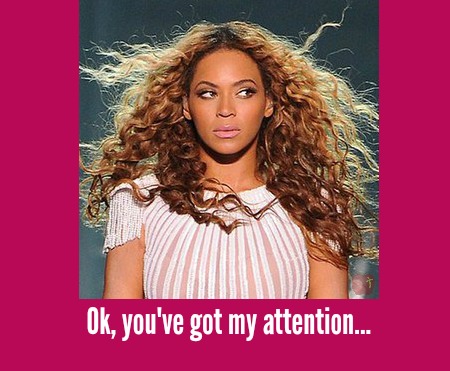




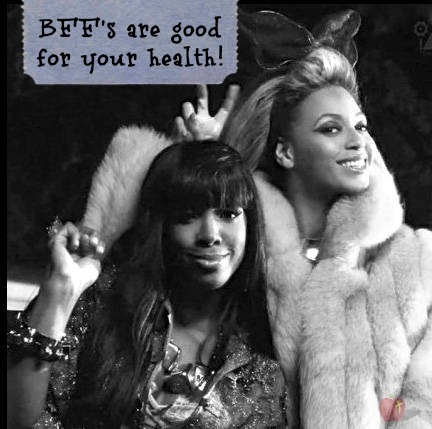


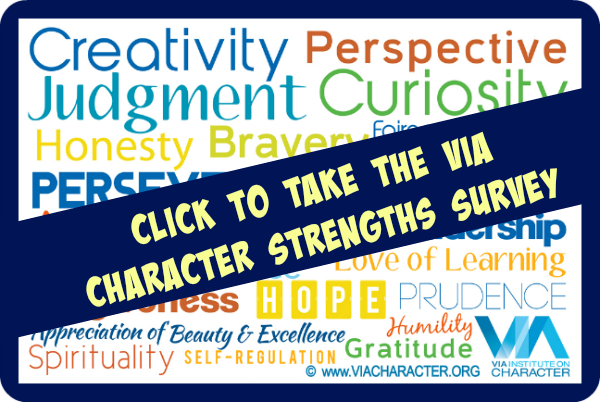






This really helped me out today. Inspiring and insightful. Thanks for this.
A lil Beyonce always cheers me up ♥ lol Glad it helped! xo :)
So worth the second read…..yes I do Get It!!!!
Told ya! ;) ♥
Thank you for this inspiring content. It cheered me up. Thank you!
You’re so welcome! I’m glad it could help! :)